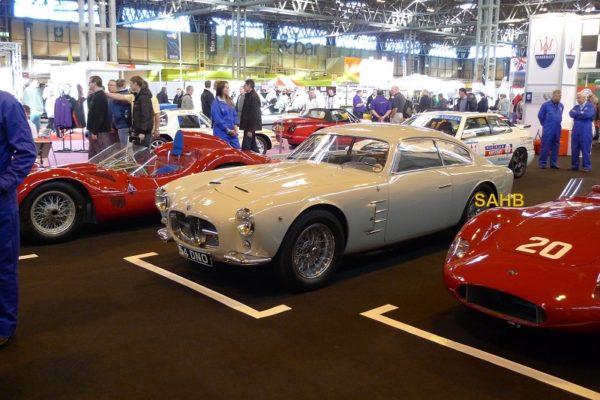
Maserati introduced their A6GCS in 1953 as a two-litre, twin-cam, open sports-racing car. The car in our Snapshot was the road-going version: the A6G/54 GT, designed to make money for the company to support the vast costs of Formula 1 racing.
Sixty A6G/54 GTs were produced in just over three years from 1954 to 1956. They carried coupé and spyder bodywork by Frua, Allemano and Zagato – the latter making only twenty of the lightest cars, more focused on competition. Stirling Moss and Denis Jenkinson used a test mule Zagato coupé when practising for the 1956 Mille Miglia.
This Maserati’s engine was all aluminium, despite the G in the car’s name that traditionally for Maserati signified Ghisa (cast iron). With twin-plug heads it put out 160bhp, enough to propel the lightweight Zagato-bodied A6G/54 to over 130mph. The engine was created by the Italian engine designer Gioacchino Colombo. Born in 1903 in Legnano, he began as an apprentice to the great Vittorio Jano at Alfa Romeo. In 1937 he designed the 158 engine for the Alfetta and caught the attention of Enzo Ferrari, who asked him to design a small V12 for use in the racing and road cars of the new Ferrari marque. Starting in 1947 as a tiny 1.5-litre in the Tipo 125 (125 x 12 = 1500cc), the Colombo engine would power road-going and endurance-racing Ferraris for over 40 years, in displacements up to 4.8 litres. Colombo left Ferrari in 1950 and returned to Alfa Romeo to supervise racing. After considerable success with Farina and Fangio, Colombo joined Maserati in 1953. It was here that he designed the A6 series – and the superb 250F Grand Prix car.
The car in our Snapshot is lacking the signature Zagato double-bubble roof – only two of the A6G/54 GTs were so-bodied – but it is surely one of the most dramatic bodies of the era, said by one observer to exude “controlled aggression.”
The Zagato A6G/54 GT was an ideal car for the rich amateur: an impressive road car that could be used for racing at the weekend. This particular car, chassis 2118, was delivered to just such a driver, Giuseppe Musso (brother of works Ferrari and Maserati driver Luigi).
This Snapshot was taken at the Classic Motor Show at the NEC in November 2010. Behind it is another fabulous Maserati, a Tipo 61 Birdcage sports racer. And in front, appropriately, is an Osca – the marque built by the Maserati brothers after they had sold their own company to the Orsi family in 1937.







Leave a Comment